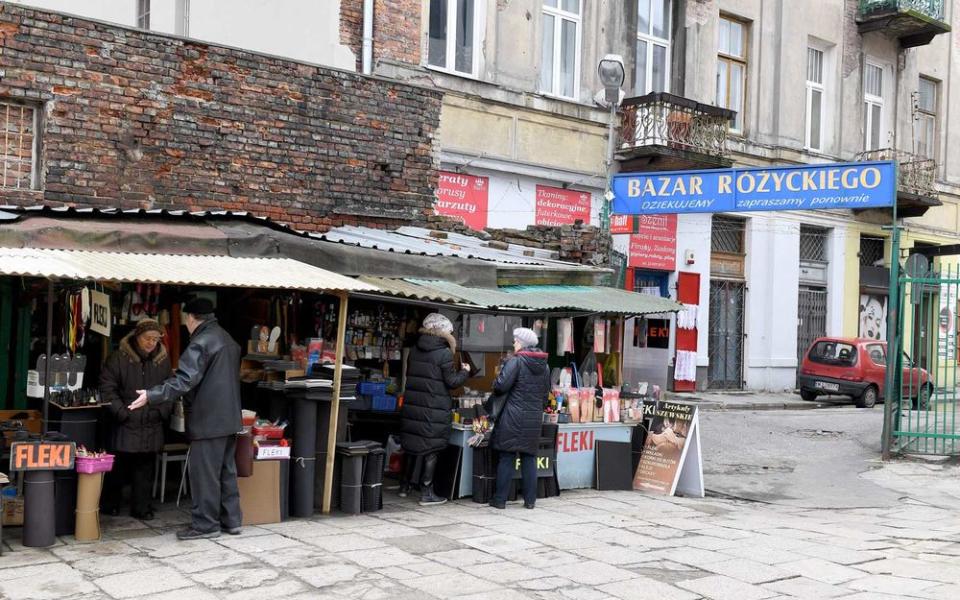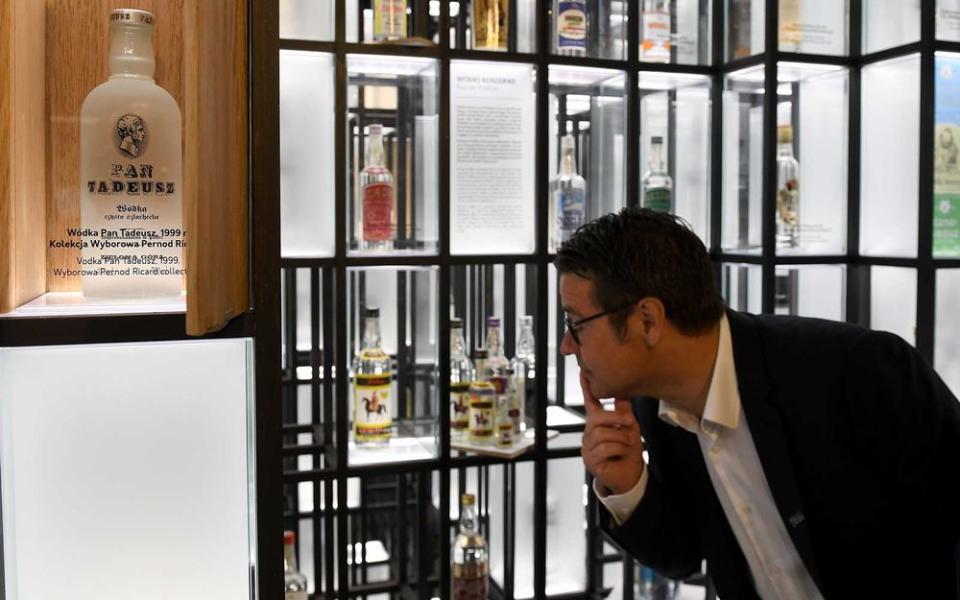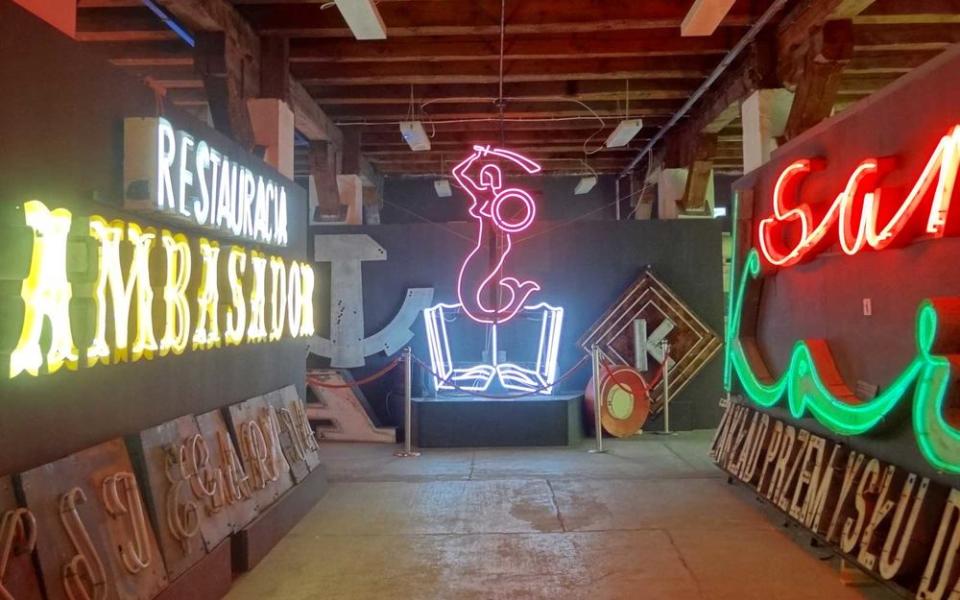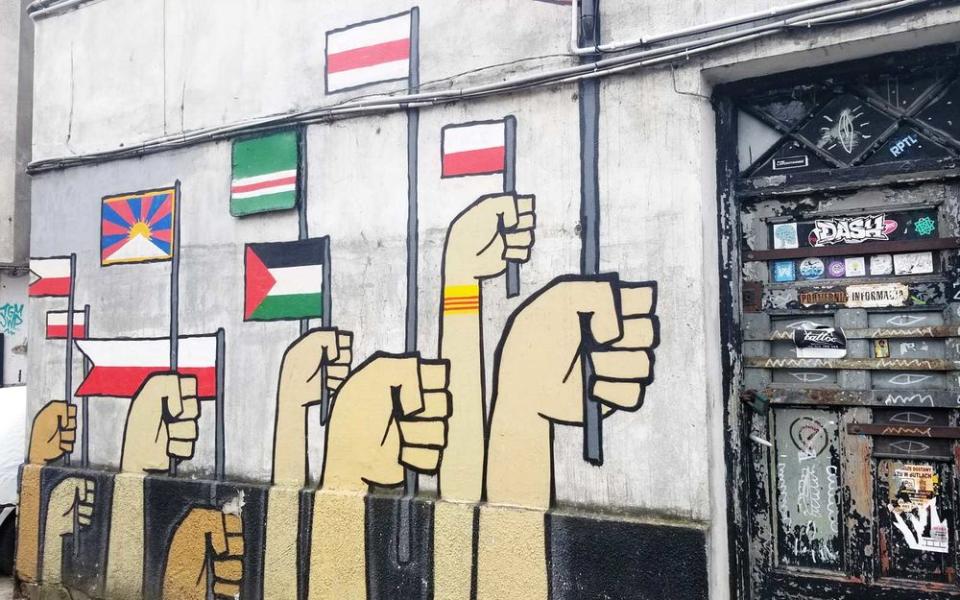Inside Praga, Warsaw's Most Hipster Neighborhood

On the right bank of the Vistula River, you will find a neighborhood of derelict art nouveau architecture, the exteriors of the buildings dotted with bullet holes and grimy with dirt. It looks like it's been decades since they've seen a paint job.
It's been more than 70 years, in fact. And although Warsaw's city center was mostly destroyed by Nazis during the Invasion of Poland and the Warsaw Uprising, Praga, the city's eastern district, remained intact. A visit to Praga is as close to pre-war Warsaw as it gets.
Until recently, Praga was a place to avoid — its streets considered unsafe, unwelcome, and crime-ridden.
But the once dangerous neighborhood has begun to earn a new reputation. In the last few years, Praga's affordable living costs has drawn an influx of students and artists who have quickly transformed the area into a hipster haven.
With street art decorating the buildings, and a host of art galleries, museums, coffee shops, and clubs beckoning to be explored, Praga has indeed become Warsaw's coolest neighborhood.
So on your next trip to the Phoneix City, get out of Old Town and spend a day exploring Warsaw's edgy side.
Related: 19 Photos That Will Have You Planning a Trip to Warsaw
In the morning
Centrum Zarządzania Światem
With its large space and exposed pipes, its cozy chairs and friendly staff, this cafe manages being both industrial and intimate. For breakfast, try the pulled pork on brioche: while you might think barbecue should be reserved for backyard cookouts, Centrum Zarządzania Światem will seriously upend your thoughts on what can and cannot be eaten in the a.m. Add a cappuccino to your order and you’re looking at a delicious — and decent-sized — meal for a meager $4.32, less than the price of a latte in New York City.
The cafe is open throughout the day, so be sure to come back later for their Alsatian pies, and for live music and a cocktail in the evening.

Bazaar Różyckiego
While Warsaw’s oldest market has drifted out of fashion over the past few decades, Bazaar Różyckiego remains a neighborhood institution that offers an echoing glimpse into the city when it was under Nazi and communist regimes, when Różyc served as a hotspot for black market trade.
Besides the usual market fare like hats, scarves, toys, shoes, and purses, today you can find uncommon and unusual goods among the rundown stalls (I’m talking polyester wedding dresses, suits, and, if the rumors are true, fake IDs and illegal contraband from Russia). While you’re here, consider getting pyzy (potato balls), a local delicacy sold by elederly women out of trolleys, and see if you can catch a performance by the market’s resident band.
Park Praski
With over 30 parks and gardens to enjoy in Warsaw, it is impossible to say which one truly is “the best.” However, what makes Park Praski truly unique is its three resident brown bears, Tatra, Mała, and Sabina. According to travel guide In Your Pocket, the park has raised over 400 bears since 1949. While it’s not exactly known why, the most popular theory is that the nearby Warsaw zoo is trying to get them acclimated to humans before having them sent over. The bears are kept in a concrete enclosure so they cannot hurt you — just don’t try to climb in.
Warsaw Zoo
Right next door to Park Praski is the Warsaw Zoo. While you might like to pay a visit for the 12,000 animals alone, the attraction is better known for its historical significance. During World War II, zoo director Dr. Jan Żabiński and his wife Antonia hid nearly 300 Jews inside the zoo: in empty animal cages, in underground tunnels, and in their house on the zoo’s grounds. On the first Sunday of every month, you can visit the home and take a tour of the cellars where the Żabińskis kept the Jews safe.
In the afternoon
Caffee Galeria Sztuki
For lunch, wander over to Caffee Galeria Sztuki on Ząbkowska Street. Featuring soups, salads, quiches, and pastas, this cozy chic restaurant offers an assortment of upscale dishes at affordable prices. And if you’re looking to satisfy your sweet tooth, a slice of the tort bezowy, a Polish meringue cake, is sure to hit the spot.

Praga Koneser Center
For years, the site of the former Warsaw Vodka Factory sat abandoned — but in the last year the industrial complex has seen a complete resurgence. In addition to its host of art galleries, restaurants, shops, and bars, Koneser’s biggest draw might be the Polish Vodka Museum, which opened in June 2018. Learn about the history of the traditional Polish spirit through interactive exhibitions, or, if you’re more interested in drinking vodka than learning about it, there’s a tasting room for you to sample different types.

Soho Factory
Soho Factory is the go-to destination for artsy types thanks to its mix of art studios and design shops. The prize jewel in this post-industrial complex, though, is the Neon Muzeum. This colorful museum features over 200 neon signs from the 1950’s to 1970’s, salvaged by photographer Ilona Karwinska and graphic designer David S. Hill. Other than the fact that the bright and colorful pieces are pretty to look at, the signs offer an interesting history lesson in Poland’s neonization movement.
In the evening
Zabkowska Street
Head back to Ząbkowska Street to experience the neighborhood’s nightlife. You’ll find many restaurants on Praga’s busiest street, including Tłusto i Syto BBQ, Russian-inspired Skamiejka, and COŚ na Ząbkowskiej, a restaurant worth walking past even if it’s just to see its foil-covered exterior. Round out dinner with drinks at Łysy Pingwin or W Oparach Absurdu, a local pub with live music and beer, pierogi, and cocktails on the menu.

11 Listopada Street
Walk down 11 Listopada Street until you reach no. 22. Not only is this courtyard known for its street art, its three clubs — Skład Butelek, Chmury, and Hydrozagadka — are thought to be some of the best in Warsaw. According to Culture Trip, fans of folk and contemporary music can also come to the backyard of no. 22 for the occasional music festival.

